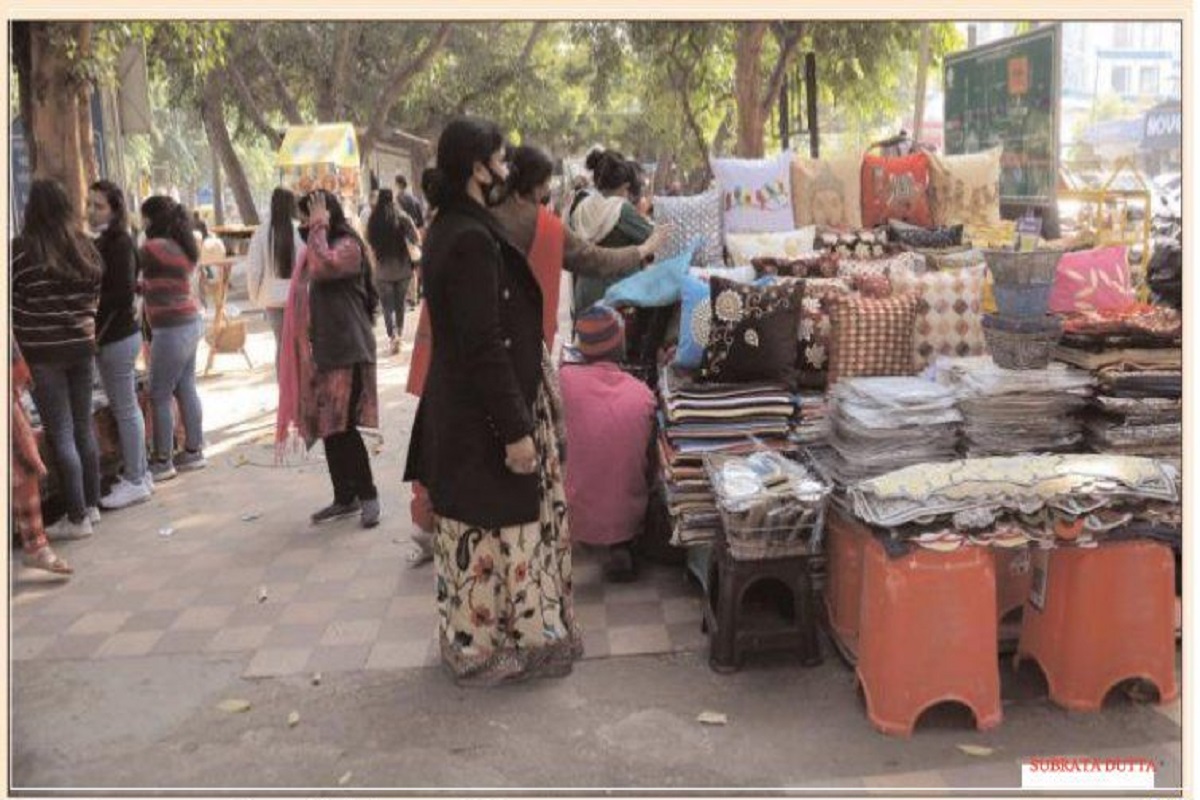72 nominations filed so far for seven LS seats in Delhi
The last date for filing of nominations is 6th May while the scrutiny of the nominations will take place on 7th May, as per the notification.
Selling wares on the streets close to densely populated residential areas or commercial centres seems a highly-favored work opportunity.

(Photo: SNS)
Delhi has become a vendors’ town. This is evident every time the city reopens after lifting of Covid-19 restrictions. Imposition and lifting of restrictions periodically do not affect the overall street scene of the city.
The only exception is the vendors, who disappear or show up, depending on the situation. In fact, if they go about their business freely, it is taken as proof of normalcy in the city. Lately, a worrying development has been noticed.
The number of vendors is getting larger after every phase of restrictions. Their mobile rehris and semi-permanent occupation of pavements are increasing. In several localities, it is impossible to walk either on pavements or on roads. The vendors’ mobile platforms form long queues on both sides of the roads also.
Advertisement
This leaves little space for pedestrians. They can neither walk on pavements nor on the roads in front of them. It is not every time possible or required to hire e-rickshaws or other transport for short distances.
There are occasions when people want to walk down for their work. Sometimes, these are rare occasions when they get an opportunity to walk. Some are under doctors’ advice to walk short distances. But this is getting impossible. It is understandable that more people are finding means of livelihood by selling wares on the streets.
The administration is also more tolerant of the vendors who faced hardships during the Covid-19 restrictions. But there is no attempt to restrict them to some tight clusters. The city now looks like a vendors’ town.
Selling wares on the streets close to densely populated residential areas or commercial centres seems a highly-favored work opportunity. Many vendors run mobile kitchens where normal food like chapatis and veg curries is available.
The others sell hot dosas, tea with snacks, or non-veg items like seekh-kebab. These are attractive eatables that many passers-by are unable to resist. What is adding to the confusion is the parking of cars by some customers in front of the stalls.
These are huge vehicles that take a lot of space. Along with the e-rickshaws and cycle-rickshaws running in both directions, there is no space left for pedestrians to walk without their hands on their heads.
Nobody is bothered about their plight. In fact, the pedestrians have become the odd people out on the streets. During evenings, the street scene appears colourful as the vendors have fancy lighting.
This makes the roadside shops even more attractive. The cars too switch on their lights and run fast. For the pedestrians, it is blinding to walk. Many people avoid going out of their homes in the evenings just for this reason.
They prefer to do all their work in the daylight itself. The pity is that it is in their own locality that residents fear to walk. In such a scenario, if surveys show that a large number of pedestrians are killed in road accidents, it is not surprising.
All possible spaces between residential and commercial areas are slowly getting covered by the vendors. A day may come when municipal authorities may not know where to start if they want to reclaim the encroachments.
Advertisement